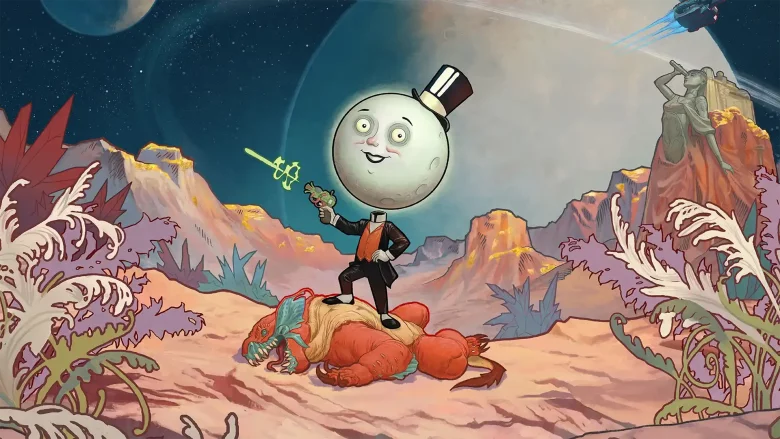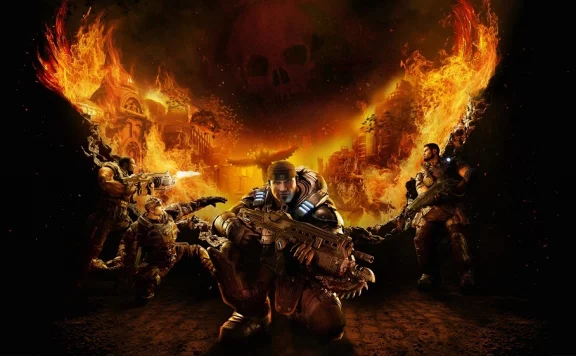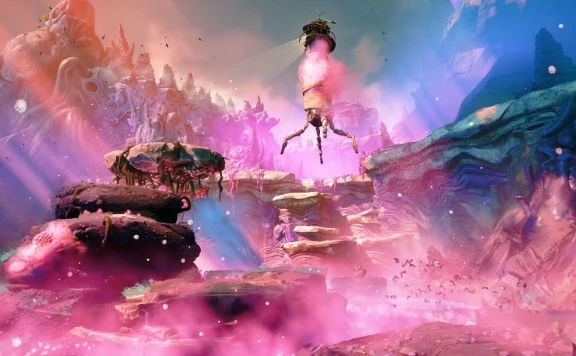You’ve got to hand it to a game that willingly allows your player character to be the dumbest person in the room and still get the job done. It almost brings a new level to roleplaying to a video game when you don’t just have four dialogue choices that ultimately say the same thing except one is in a sarcastic voice. In the Outer Worlds 2, there are so many ways you can influence what your character says and by extension how NPCs respond that I almost wished I could play ten characters at once just to take a bunch of different backgrounds, skills, traits, perks, and flaws that would let me see all the options.
The Outer Worlds 2 is a game about choices, and those choices affect each playthrough in a number of different ways. It’s nothing truly new to see a game that lets you bypass certain encounters if you have a stealth skill, or rob a place easier if you can pick locks better than the next player character, and I’d have to play through The Outer Worlds at least twice to see just how much of a difference the choices here make, but if it turns out to all be illusion, at least it’s a damn good one.
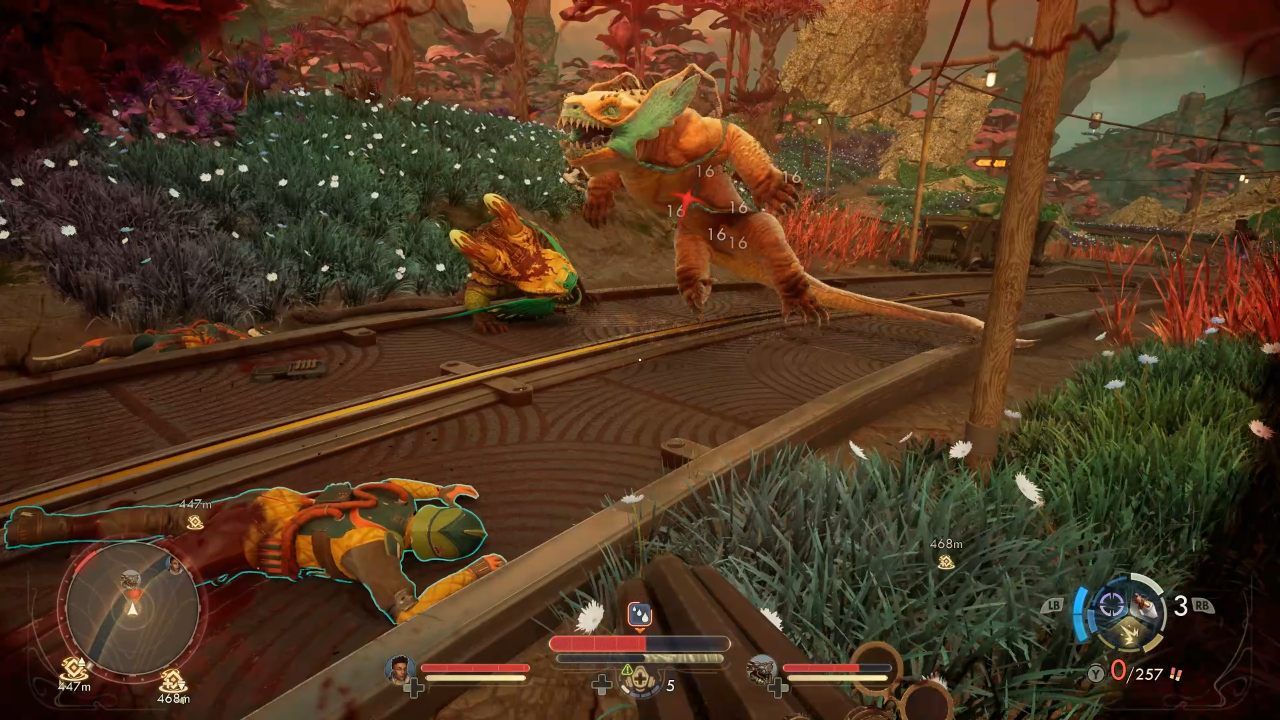
Set several years after the events of the first game, Obsidian’s sequel casts you as a member of the Earth Directorate, a galaxy-spanning law enforcement agency whose thankless job it is to try to keep peace between the various factions that run the consumerist hellhole of the future. After an early mission goes awry, the full game picks up 10 years later, when your drifting escape pod is picked up by Niles, an idealistic member of your former crew. What follows is, a chase across the star system as you attempt to take revenge for what happened while contending with Auntie’s Choice, a horrible nightmare corporation that has absorbed multiple companies, including Spacer’s Choice from the first game.
Auntie’s Choice has its fingers in every pie, bombarding you with adverts and radio broadcasts, peddling corporate propaganda while building their empire on the blood of the downtrodden. It’s all played for laughs, of course, but only because if you don’t laugh you might start to realise it’s not such an impossible future. A number of other factions oppose Auntie’s Choice, and you can drum up standing with all of them by helping the workers, soldiers, and staff of each with various missions, quests, or favours.
It would tie a nice neat bow on the rest of the review if I could just say that The Outer Worlds 2 is to Fallout what Avowed was to the Elder Scrolls, but that would be selling it short. Like the first Outer Worlds, Avowed felt like a proof of concept in some ways, where this sequel feels like Obsidian have regained their mojo from Fallout: New Vegas. It’s super confident, funny without feeling forced, and has a way of making you feel like you’re telling a unique story, even if the main beats will be the same for everyone.
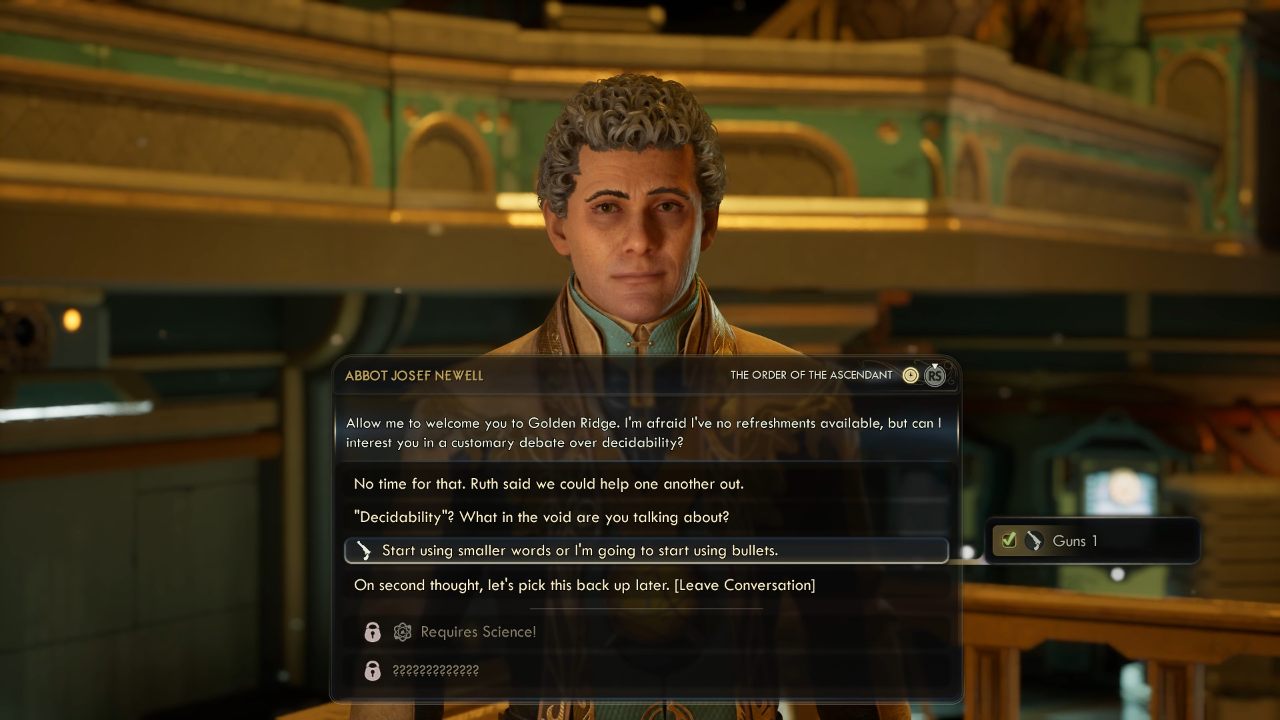
The plot isn’t malleable, unfortunately. You will be led from world to world in a certain order (though you can jump back and forth when you like), though the worlds themselves are huge open spaces, usually with one or two settlements and tons of points of interest shrouded by the fog of war. Fast travel unlocks at each named location, making it easy to get around, and that’s just one of the ways The Outer Worlds 2 tried to make things more convenient for the player.
There’s no inventory limit, for example. You can just pick stuff up, seemingly endlessly, without getting encumbered. There seems to be no upper limit on crafting items or ammunition, though there must be a cap of 9999 or something. It wouldn’t work if you did have a low cap anyway, because the world is littered with loot from clothing and guns to food items, crafting mats, buffs, and collectibles. Money is easy to come by from selling junk or taking bounties, but it’s also easy to spend at dozens of merchants, kiosks, and a whole moon that’s just an open market.
How you play is entirely shaped by how you build your character. Initially you can select gender and appearance, then your background. I chose Spacer, and Law Enforcer, which gave me dialogue options throughout that were influenced by my growing up in space and loving the letter of the law. But you could be a brigand, gambler, or any a dozen or more other combinations. Next it’s Skills, which you’ll select two of. Observation and Engineering were my two picks, but these encompass lockpicking, guns, melee, stealth, speech, explosives, science, medicine, hacking, and more. Again, these influence dialogue, but also how you approach the world.
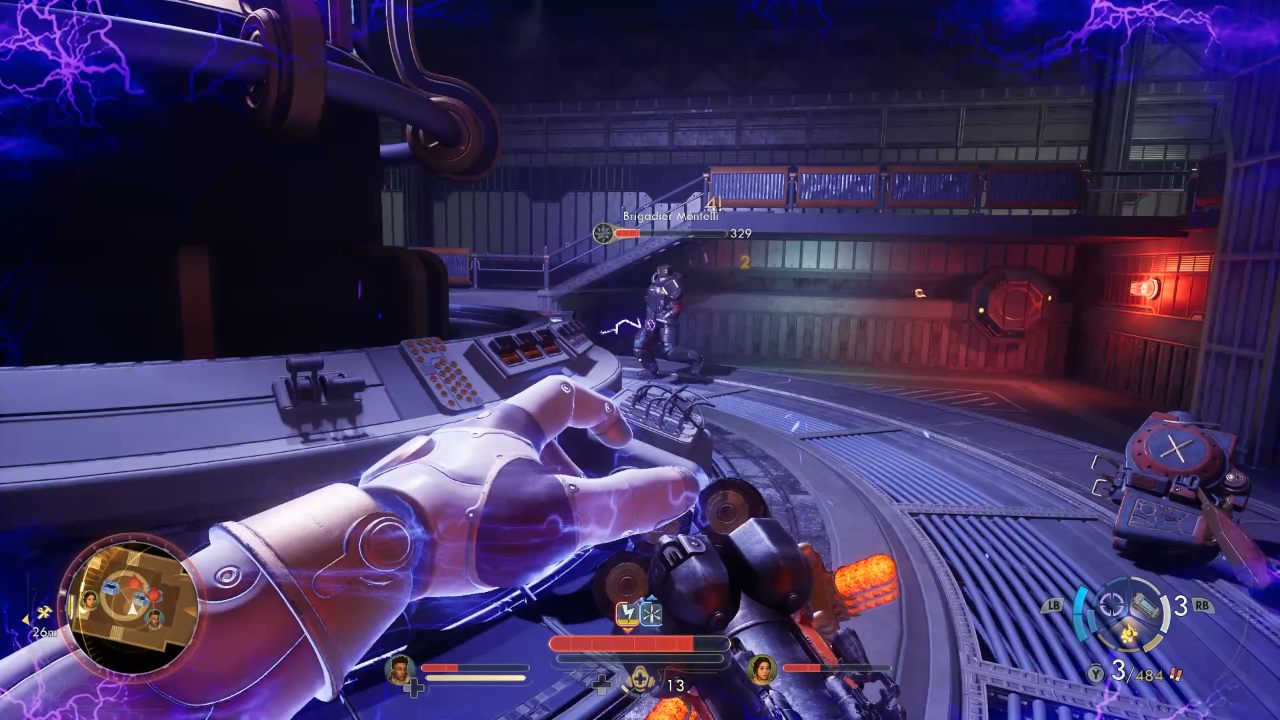
Being able to hack or sneak can be super handy, but you’ll need explosives to defuse mines, medicine to improve your healing abilities, and guns or melee to become more deadly. These choices matter, and even though you can diversify a little to get by in a few other areas, you’ll need to focus on certain skills to get the most out of them.
However, your Skills and actions also influence Perks and Flaws. Every second level gained will give you a Perk point to spend, unlocking things like the ability to pickpocket, see into containers before you use up lock picks, take less damage, or reduce the toxicity levels from over-zealous use of your healing inhaler.
Less simple are Flaws, which I don’t want to spoil too many of because some of them are very clever. For example, if you’re a gamer who skips dialogue, the game will give you a Flaw that increases your Speech results but randomly picks answers for you now and then. If you compulsively reload, the game will notice and assign you a flaw that increases damage when you have ammo in the gun, but decreases it for a while if you ever reload from zero. There are so many Flaws, and so many of them made me smile. The best of it is, you can simply reject them if you don’t want them.
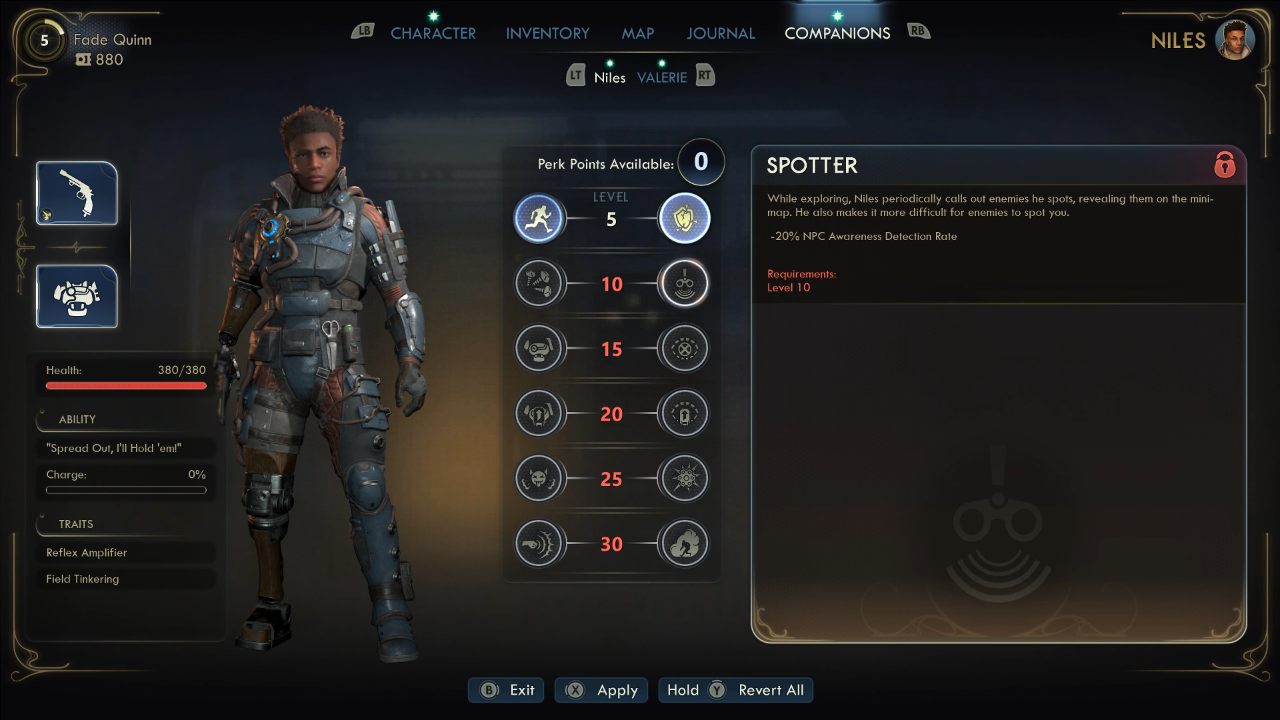
The Outer Worlds 2 is a clever game masquerading as a silly one. The Companions seem more nuanced and layered than in the previous game, and two of them joined me when I didn’t even expect them to be party members at all. While you can’t swap out their gear, completing Companion Quests allows you to alter their builds slightly, changing their damage type or behaviour, and you can dictate their development every 5th level by unlocking a new ability or trait. All are useful for different things, too. Marisol can use a cloak and scavenge extra bullets from enemies, for example, while Aza is a psycho melee fighter who’ll draw enemy fire and threat. Niles might be the most useful, though, as he’s basically a walking workbench and lets you craft, mod, and disassemble gear wherever you are.
Set in the Arcadia system, The Outer Worlds will see you traverse the various moons of Elysium, and they’re a diverse bunch of locales that take a lot of influence from Avowed. Bright colours, bizarre fauna and flora, and of course, danger everywhere. From bandits and enemy soldiers to automechs and deadly wildlife, it feels almost like Borderlands 4 at times, but with more structure. There’s not a monster hole every twenty steps or randomly occurring enemies; instead, the worlds are strewn with wreckage and small settlements, caves and abandoned factories, things that catch your eye as you trek and make you wonder what’s inside. Usually, they’re worth a look.
Loot drops fast, and a lot of it is admittedly vendor trash, but there are many gold-coloured unique weapons and armour parts to find. Gear conveys multiple buffs, which you’ll mix and match as suits your build, but it also leads me to the first of two fairly big gripes.
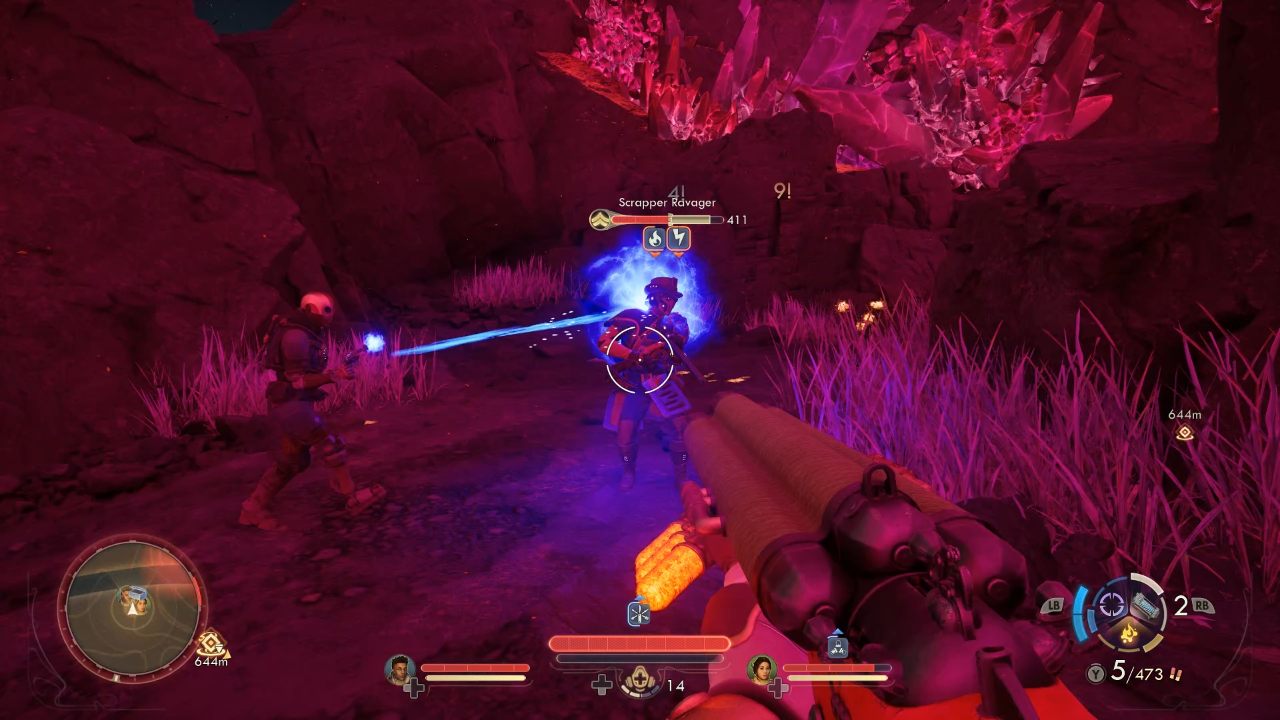
Chest and head armour pieces come with one or more stat boosts like increased crit chance or movement speed, and one or more utility slots. Unless you add extra item slots directly to these armour pieces, you’ll only be able to equip two weapons, one health booster, and two different types of throwable. This is a fun system on paper, but in practice it’s counterintuitive and at odds with how user-friendly everything else is. Because you can’t remove or swap out mods, and have to craft them from finite blueprints every time, you’ll end up with an inventory full of different outfits with different slots on them, which makes creating any kind of build a total nightmare.
Later you’ll find armour with multiple slots that makes it easier, but Obsidian’s solution of just throwing literally scores of armour sets at you, all with different random effects, is a total mess. What’s more egregious is that there are some cool armour pieces and an optional third-person mode, but there’s no transmog option. I ended up in the same armour and cowboy hat for twenty-odd hours because it was a ball-ache to swap it and have to re-equip my third and fourth weapons every time, as there’s also no saved loadouts. It’s a mind-bogglingly clunky system and I’ve no idea how it made it past the play-testers.
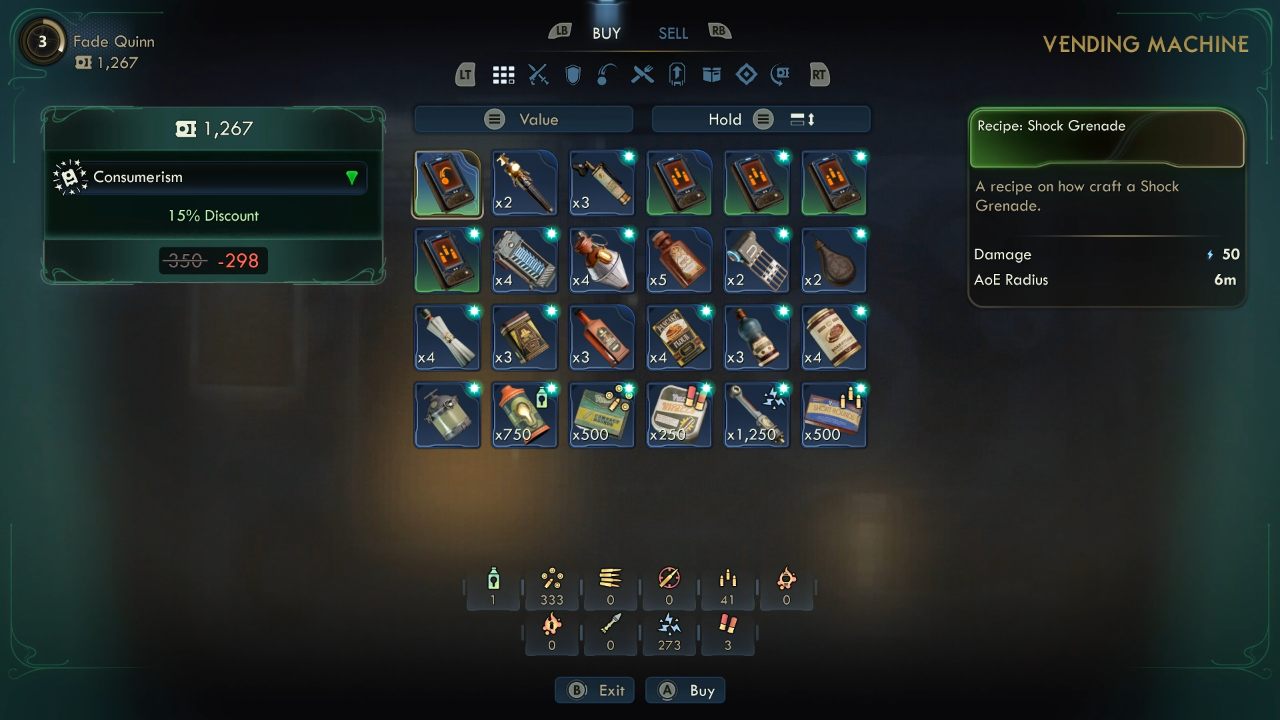
My other gripe is sadly performance related. Despite playing on a decent middle-of-the-road PC with a 4070 RTX, and regardless of which settings I changed, I couldn’t get rid of the stutter during combat, nor fix the long loading times. It didn’t stop me having a ball with the game, but it certainly wasn’t something I could ignore and overlook, and it’s also likely these aren’t there on Xbox Series X. There were also other genre-standard bugs cropped up here and there, like weird AI, floating enemies, NPCs clipping through scenery, and an occasional bug that wouldn’t let me swap back into or out of third-person mode. It’s kind of sad that these glitches are still expected and accepted these days with any large open world game.
And yet, without exaggeration, I can honestly say that The Outer Worlds 2 is the game I’ve had the most fun with this year. There’s something so satisfying and effortlessly about the gunplay, and incredibly moreish about the skill and character progression. The NPCs and Companions made me laugh, the story kept me interested, and the loot kept me hoovering up everything that wasn’t nailed down, always keen to try new weapons and gadgets. I enjoyed interacting with my Companions, to, or listening to them interact with one another, either when on a mission or just chilling in my ship, the Incognito, where you can go at any time to use special keys to open lockboxes you’ve scavenged, admire the trophies from tough enemies you’ve beaten, or just chat and learn more about your ragtag crew.
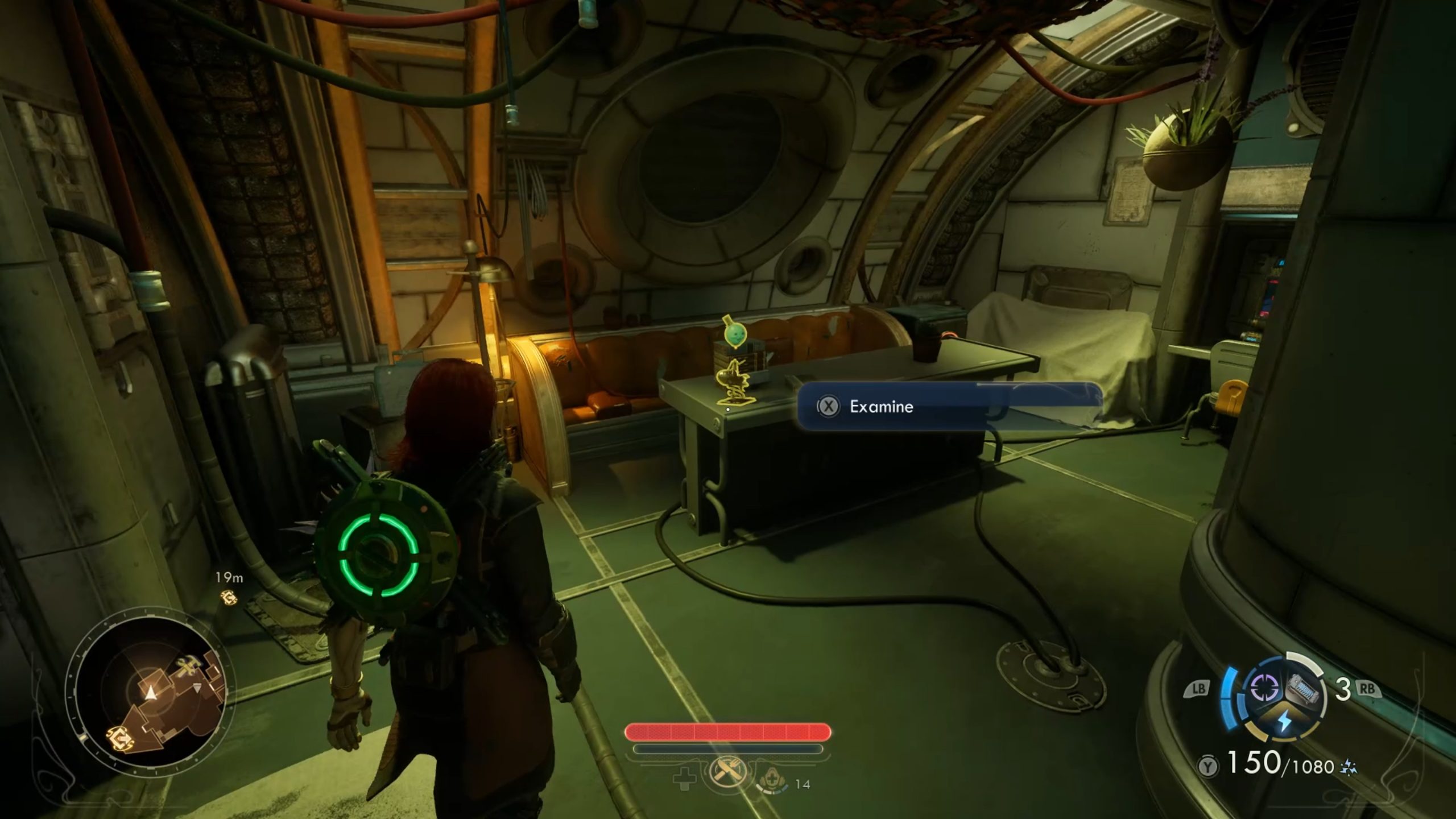
The equipment wheel lets you choose which of the guns and gadgets you want to equip for a given moment (while weapons can hotswap with Y), since you have Gadgets like a rebreather for filtering toxins, a VATS-like slow-down mode, and a special mask that lets you see invisible cables and cloaked enemies. Having to equip a melee weapons specifically for stealth kills is a bit of a drag, but I wasn’t playing a stealth build so it never bothered me much. The way different weapon archetypes (of which there’s a hell of a lot) can randomly spawn with various effects and buffs to damage or handling also made me think of Borderlands 4, though it’s not taken to that degree.
Levels are laid out in such a way that you’ll find multiple routes through them, and you won’t be able to find or solve certain things without the necessary skills. It might be grating to have to walk away from a locked room, but it makes your choices feel weighty and meaningful.
I loved my time with The Outer Worlds 2 and will go back for at least a second run with different choices and skills. It’s a deceptively smart Looter-shooter RPG with colourful worlds and entertaining characters, and some really satisfying, malleable combat. The skill, dialogue, and progression systems are more than enough to make up for some iffy performance and a couple of (hopefully patchable) design decisions, and it reinforces my belief that Obsidian is one of the greats.
